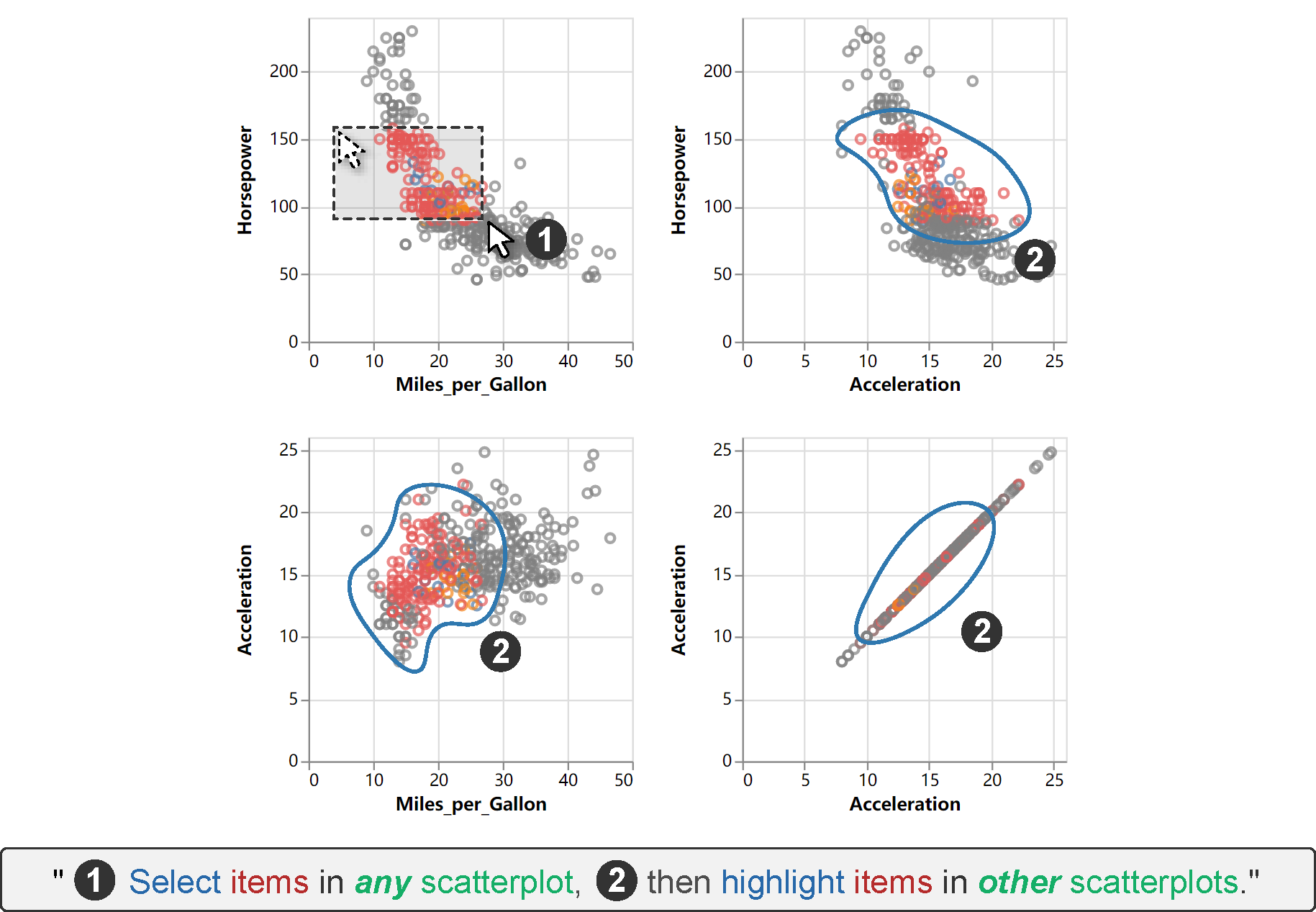Nebula: A Coordinating Grammar of Graphics
Ran Chen, Xinhuan Shu, Jiahui Chen, Di Weng, Junxiu Tang, Siwei Fu, Yingcai Wu
External link (DOI)
View presentation:2021-10-27T13:15:00ZGMT-0600Change your timezone on the schedule page
2021-10-27T13:15:00Z

Fast forward
Direct link to video on YouTube: https://youtu.be/aQgXgBpp2lo
Keywords
Data visualization, Grammar, Visualization, Usability, Libraries, Data models, Natural languages, Coordination, Multiple coordinated views, Interactive visualization, Grammar of graphics
Abstract
In multiple coordinated views (MCVs), visualizations across views update their content in response to users interactions in other views. Interactive systems provide direct manipulation to create coordination between views, but are restricted to limited types of predefined templates. By contrast, textual specification languages enable flexible coordination but expose technical burden. To bridge the gap, we contribute Nebula, a grammar based on natural language for coordinating visualizations in MCVs. The grammar design is informed by a novel framework based on a systematic review of 176 coordinations from existing theories and applications, which describes coordination by demonstration, i.e., how coordination is performed by users. With the framework, Nebula specification formalizes coordination as a composition of user- and coordination-triggered interactions in origin and destination views, respectively, along with potential data transformation between the interactions. We evaluate Nebula by demonstrating its expressiveness with a gallery of diverse examples and analyzing its usability on cognitive dimensions.